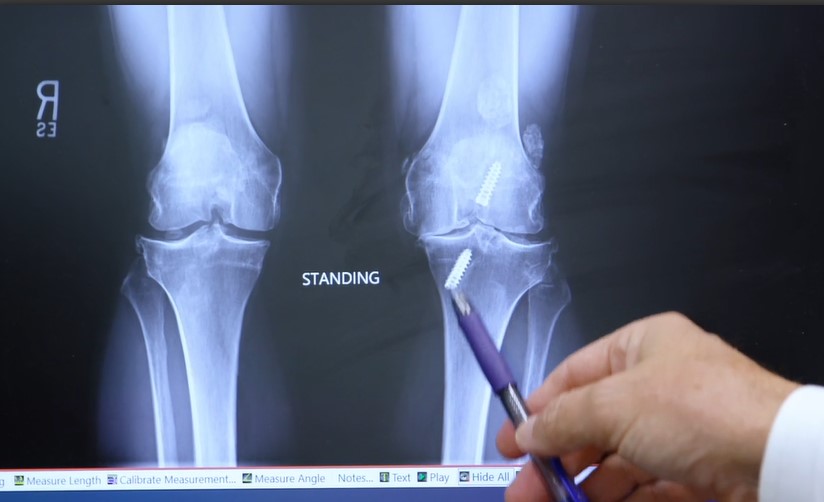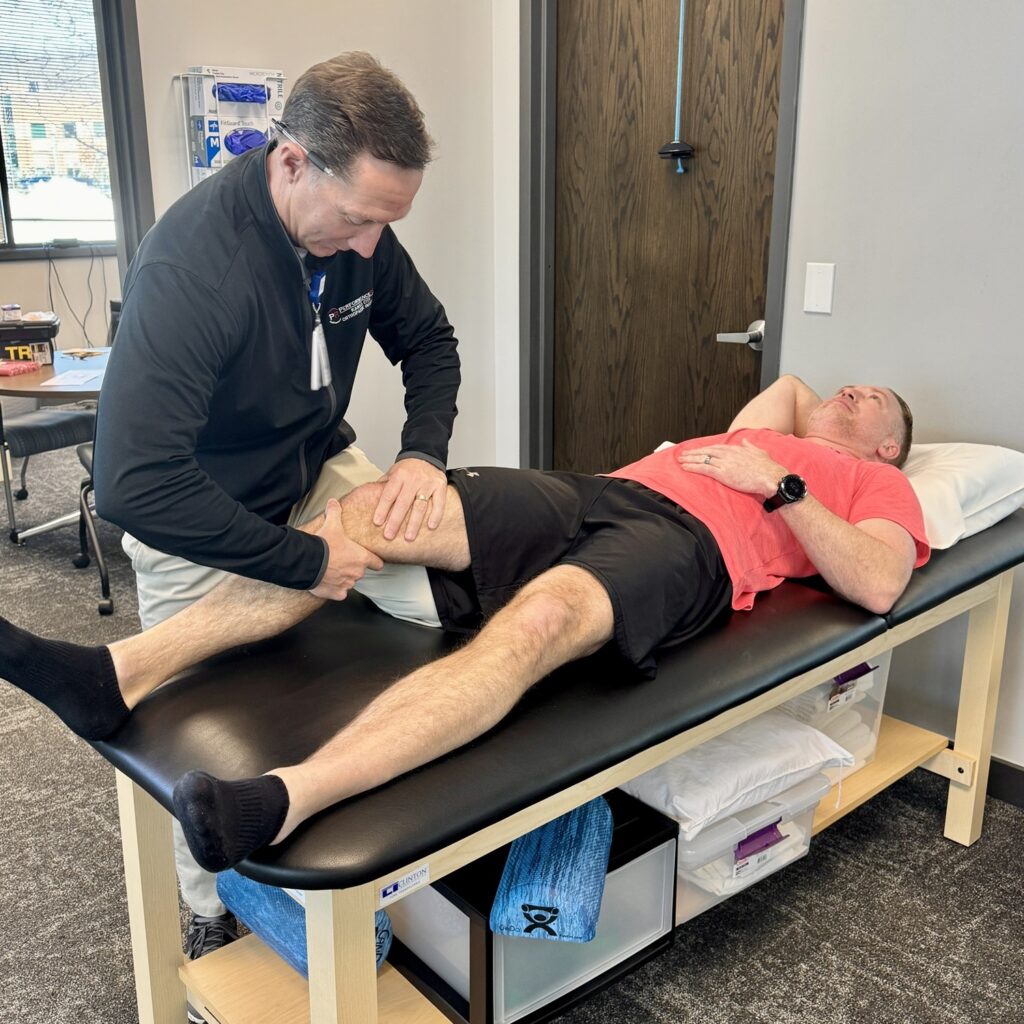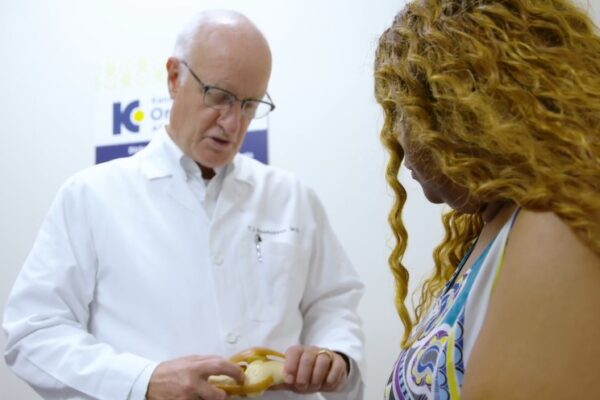Knee pain can be debilitating, turning simple daily activities into agonizing challenges. Whether it’s due to advanced arthritis, a past injury, or years of wear and tear, chronic knee discomfort often signals that something deeper is at play. For many, finding relief and restoring mobility becomes a top priority. At KCOI and our partner physician clinic Kansas City Orthopedic Alliance (KCOA), we understand the profound impact persistent knee pain can have on your life.
When conservative treatments no longer provide adequate relief, your orthopedic surgeon might discuss knee replacement surgery. This isn’t a one-size-fits-all solution; significant advancements have led to two primary options: Total Knee Replacement (TKR) and Partial Knee Replacement (PKR). Understanding the differences between these procedures is crucial for making an informed decision about your orthopedic care.
This blog post will dive into both total and partial knee replacements, explaining when each might be recommended, and help you understand how our team at KCOI can guide you through this journey.
Understanding Knee Osteoarthritis: The Root of the Problem
The most common reason people consider knee replacement surgery is severe osteoarthritis. This degenerative joint disease occurs when the protective cartilage that cushions the ends of your bones wears away over time. In the knee, this includes the cartilage on the end of your thigh bone (femur), shin bone (tibia), and kneecap (patella).
As this cartilage deteriorates, the bones begin to rub directly against each other, leading to:
- Pain: Often described as a deep ache, sharp pain, or grinding sensation, especially with movement or after periods of rest.
- Stiffness: Making it difficult to bend or straighten the knee, particularly in the mornings.
- Swelling: Due to inflammation within the joint.
- Limited Range of Motion: Affecting your ability to walk, climb stairs, or perform daily activities.
- Clicking or Popping Sounds: Known as crepitus, as the joint surfaces grate against each other.
While osteoarthritis is often age-related, previous knee injuries (such as ligament tears from sports or trauma), genetics, obesity, and overuse can also contribute to its development. When these symptoms significantly impact your quality of life and non-surgical treatments like physical therapy, medication, and injections are no longer effective, your orthopedic specialist may discuss surgical intervention.
Non-Surgical Approaches: When Is Surgery the Next Step?
Before recommending surgery, your orthopedic surgeon will always explore a range of non-surgical treatments. Such approaches include:
- Physical Therapy: Targeted exercises to strengthen the muscles around the knee, improve flexibility, and enhance stability.
- Medications: Over-the-counter pain relievers (like NSAIDs), prescription anti-inflammatory drugs, or pain medications.
- Injections: Corticosteroid injections to reduce inflammation and pain, or viscosupplementation injections (hyaluronic acid) to lubricate the joint.
- Lifestyle Modifications: Weight management to reduce stress on the knee, and activity modifications to avoid high-impact movements that aggravate symptoms.
- Assistive Devices: Using a cane or walker to reduce load on the affected knee.
- Compression Sleeves & Braces: Sleeves can reduce swelling and inflammation, while braces recreate stability and offload the knee joint.
You can learn more about comprehensive orthopedic treatments available at KCOI for various knee conditions, including those managed by our skilled sports medicine specialists for less severe injuries.
The decision to move towards knee replacement surgery is made when these conservative methods fail to provide lasting relief, and the pain severely limits your daily activities and quality of life. This is where understanding your surgical options becomes paramount.
Total Knee Replacement (TKR): A Comprehensive Solution
Total Knee Replacement (TKR) relieves severe knee pain and restores function by replacing damaged joint surfaces with metal and plastic implants. At KCOI, we use advanced techniques—including robotic-assisted surgery—to customize each procedure to the patient’s unique anatomy.
How TKR Works:
- Femoral Component: A metal cap covers the end of the thigh bone.
- Tibial Component: A flat metal plate with a polyethylene (plastic) insert is placed on top of the shin bone. The plastic insert acts as a new smooth cartilage surface.
- Patellar Component (Optional): A plastic button may be placed on the underside of the kneecap.
The goal of TKR is to resurface all three compartments of the knee (medial, lateral, and patellofemoral) to eliminate bone-on-bone friction, reduce pain, and improve the knee’s alignment and movement. TKR is often recommended for patients with widespread arthritis affecting multiple areas of the knee joint.

Partial Knee Replacement (PKR): A More Targeted Approach
Partial Knee Replacement (PKR) is a less invasive option for patients with arthritis limited to one knee compartment, typically the inner side. It preserves healthy bone and cartilage by replacing only the damaged area. Dr. Sean Bonanni notes PKRs work well for isolated wear but may not last as long as total knee replacements.
How PKR Works:
- Only the damaged cartilage and bone from the affected compartment are removed.
- Small metal components are resurfaced onto the ends of the femur and tibia in that specific area.
- A plastic insert is placed between these metal components to create a new smooth gliding surface.
Advantages of PKR (when appropriate):
- Smaller Incision: Generally, a less extensive incision compared to TKR.
- Less Bone Removal: Preserves more of your natural bone and ligaments.
- Potentially Faster Recovery: Many patients experience a quicker return to activities.
- More Natural Feel: Some patients report that a PKR knee feels “more natural” because more of their own knee anatomy is preserved.
- Reduced Blood Loss: Typically less blood loss during surgery.
- Shorter Hospital Stay: Often allows for a shorter recovery period in the hospital.
Considerations for PKR:
PKR is not for everyone. Ideal candidates usually have:
- Arthritis primarily affecting only one compartment of the knee.
- Intact knee ligaments (especially the ACL).
- Reasonable knee alignment.
- No significant inflammation or other widespread knee conditions.
Your orthopedic surgeon will carefully evaluate your specific condition, including X-rays and potentially MRI scans, to determine if you are a suitable candidate.
Choosing the Right Path: Factors Your Orthopedic Surgeon Considers
The decision between a Total Knee Replacement and a Partial Knee Replacement is complex and highly individualized. It involves a thorough discussion with your orthopedic surgeon at KCOI, taking into account several factors:
- Arthritis Extent: Widespread = TKR; isolated = PKR possible
- Ligament Stability: Strong ACL needed for PKR
- Knee Alignment: Major deformities may require TKR
- Age & Activity: May influence implant choice and recovery
- Patient Goals: Pain relief and function drive decision
- Surgeon Expertise: Surgeon selects best fit for your anatomy
- Bone Quality: Good bone needed for secure implant placement
What to Expect: Recovery and Rehabilitation
Regardless of whether you undergo a total or partial knee replacement, rehabilitation is a critical component of your recovery. Both procedures aim to alleviate pain and restore function, but the journey involves dedication and effort.
- Hospital Stay: Typically a few days, though some patients may qualify for outpatient joint replacement.
- Pain Management: Your care team will provide medication and strategies to manage post-surgical pain.
- Physical Therapy: Begins almost immediately after surgery, focusing on restoring range of motion, strength, and walking ability. This is crucial for optimizing your outcome.
- Home Recovery: Continuing exercises, managing swelling, and gradually increasing activity levels as advised by your surgeon and physical therapist.
Our commitment at KCOI extends beyond the operating room. We work closely with our partners at KCOA to provide a seamless and comprehensive patient experience. From pre-operative education to post-operative rehabilitation, our goal is to support you every step of the way towards a successful recovery and a pain-free life.
Life After Knee Replacement
Modern knee replacements are highly successful at relieving pain and improving quality of life. Most patients return to daily activities like walking, swimming, or cycling. High-impact sports are usually discouraged, but your surgeon will guide you based on your recovery and procedure type.
Read about KCOA patient Leo Sebus, and his journey from pain to knee replacement to recovery. Sebus tells us that he relied on his team’s guidance on pain management and routines, and differentiating between pain, soreness and general discomfort helped him navigate his recovery.

Take the Next Step Towards a Pain-Free Life
Living with chronic knee pain doesn’t have to be your reality. Understanding the options available, from conservative treatments to advanced surgical procedures like Total and Partial Knee Replacement, is the first step towards reclaiming your mobility and improving your quality of life.
At KCOI, our expert surgeons use the latest techniques to treat all knee conditions with personalized care. Don’t let knee pain hold you back.
If you’re experiencing persistent knee pain and want to explore your treatment options, contact KCOI today. Schedule a consultation through the physician clinic at KCOA: Request an Appointment. Your journey to a healthier, more active life starts here.









